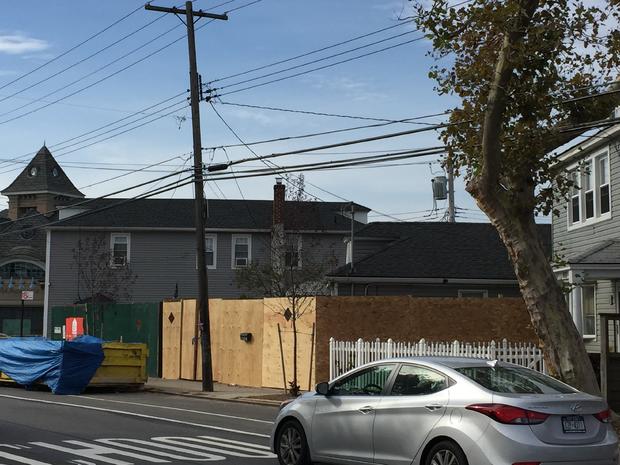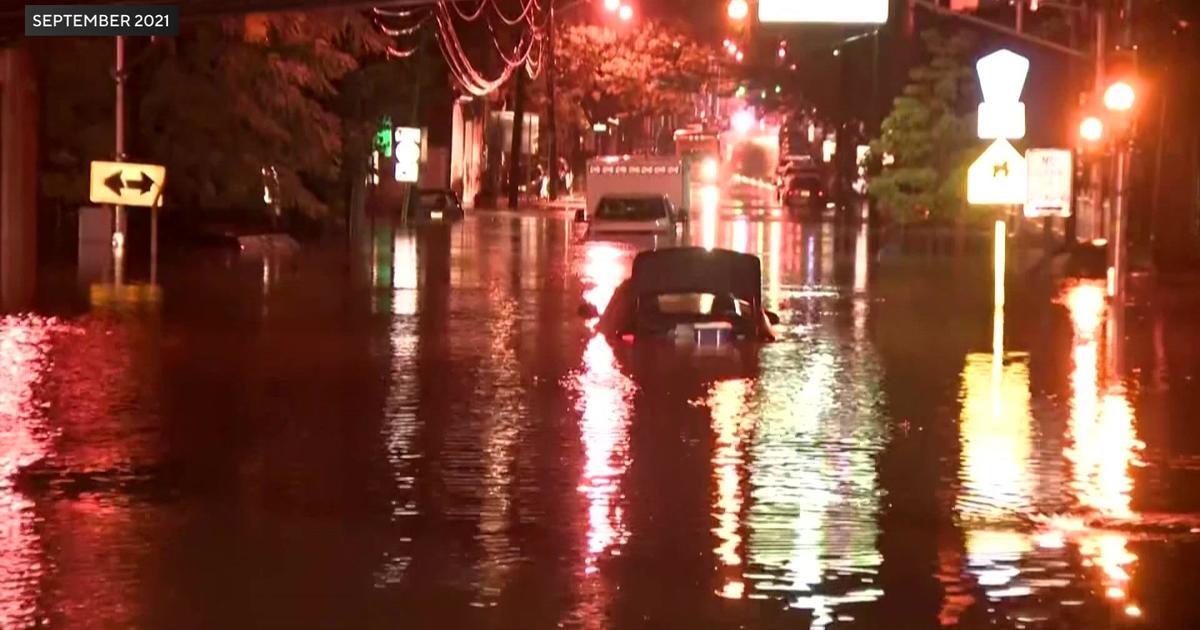3 Years After Superstorm Sandy, Rockaway Residents Want To Focus On Future
By Alex Silverman
WCBS 880
These days, there is much to see along the stretch of Rockaway Beach Boulevard from Beach 85th to Beach 95th streets. But to get a sense of what the past three years have wrought, it takes an eye for the little things.
Maybe you wander into Rockaway Roasters, a 7-month-old gourmet coffee shop.
"We saw this area as up-and-coming," said co-owner Joe Mastey over the low roar of the grinder.
Around the corner, you might discover Crom Physical Culture, a 5,000-square-foot martial arts gym, where "life has been challenging, but really good," declares Sarah Romulo, half of the husband-and-wife ownership team.
Indeed, it takes an eye for the little things.
"Look at the floor, it's still collapsed over here," said Lenny, the proprietor of a printing shop, who despite being in business there since 1978, preferred to give only a first name.
"The water was sitting right here," he said, pointing down at a few tilted tiles.
But if you were only to notice the good, many here would forgive you.
"Some of us are actually sick of Sandy. In a way they don't want to dwell on the past," explained Kevin Boyle, the publisher of The Rockaway Times, a year-old weekly newspaper. "There are horrifying memories for everybody, but it's also about moving on."
That feeling is understandable.
"We are heartened by the fact that crowds came here in the summer," said Boyle. "There seems to be more interest in Rockaway than ever, so all that points to good things happening. But we can't forget that some people are still struggling three long years later."
They, too, are not difficult to find.
"It's been a struggle," said Jim Wilson, a lifelong resident of Broad Channel, the little island in Jamaica Bay just over the Cross Bay Bridge. Sitting in his newly rebuilt living room, Wilson said he was grateful to have had flood insurance. But his mother's home down the block did not. He only recently signed papers to have it rebuilt through the city's Build it Back program.
"It was very frustrating getting to that point because three different times they told us our paperwork was in order, everything is a go, we're moving along," he said.
In reality, Build it Back really only began building anything back a little over a year ago.
"The programs are slow, but they are moving forward," said Phil Goldfeder, who represents the area in the state Assembly. "There was a point where there was so much frustration and almost anger that the bureaucracy was almost like the second storm. The bureaucracy was causing people more damage and more heartache than the storm itself. I think the tide has turned on that."
Boyle is less diplomatic.
"I hear sometimes Build it Back is better than it was," he said. "Well, it's three years later. If they want a round of applause for that I guess we can give it to them."
You'll hear no cheers from Eugene O'Reilly. His disabled mother's century-old house was washed off its pilings into the bay. She has spent the past three years living in a trailer.
"Obviously we want to get her in the house for the time she has left," said O'Reilly. Build it Back refused to rebuild the house on pilings over the water, he said.
"They said they'd put it in the parking lot, and I said it's called 'Build it Back,' not 'Build it in the Parking Lot.'" The family is moving ahead on their own, but still awaiting permits from the city.
Sitting in his own Broad Channel home, fixed up with money from flood insurance and his own pocket, O'Reilly tells another familiar story. Like many homeowners, he was offered and accepted a loan from the federal Small Business Administration before the grant program was announced.
"In the end, when the free money came out with the Build it Back program, they held it against you [if you had taken a loan]," he said.
The reality is, things are moving forward. Build it Back projects are in various stages of construction all around. Program officials say more than 1,100 homes have been completed citywide, 433 of them in Queens.
There is an uncomfortable question in all this.
"There are some people who say they never should have built on this sandbar to begin with," we started to ask Assemblyman Goldfeder.
"Those people are absolutely crazy," he responded. "Broad Channel is an island of 900 of the proudest, strongest, most resilient people I've ever met. I would not ask them to go anywhere else and I'm going to work very hard to make sure they can stay in this community."
"It's a wonderful community," Boyle said of the Rockaways. "You just can't walk away from it no matter what people tell you from places like Kansas. Just saying, 'OK, leave,' is callous, it's foolish, it's unreasonable."
But Sandy's lesson has been learned. Resiliency projects are in various stages of completion across the area. Homes are being elevated and roads raised. The Army Corps of Engineers has, after what many residents felt was an unreasonable delay, added millions of cubic yards of sand to the beaches. Rockaway's new concrete boardwalk, one line of defense, is scheduled to be completed next year.
There is also a heightened consciousness of risk.
"There was supposed to be a storm," said Eugene O'Neill of the early-October Joaquin scare. "You just kind of wonder, a 200-year storm, that could happen a week later."
With that consciousness comes the inner preparedness to face whatever the future might bring.
"Most people are able to use it as something that made them stronger," said Sarah Romulo.
Maybe no one more so than herself. Romulo and her husband lost both their business and their home, and spent months trying to rebuild both.
"We were in the Knights of Columbus (hall), working out on their dance floor under their chandelier with all our members," she recalled, shaking her head. After several moves, they found their current space, more than three times the size of their original gym and able to support a membership that has grown fourfold since the storm.
Sandy "was a blessing in disguise."
Romulo seemed almost embarrassed to say it. "I know that sounds crazy and I hope I don't offend anybody by saying that, but we did pretty well with not letting it take us down."
With revival and growth comes a renewed spotlight on old gripes. Rockaway lifers, weary of an A-train journey to Manhattan that takes more than an hour, invariably point to transportation as the area's biggest want.
"It's crazy, they can go to Long Beach [in an hour]," Lenny, the print shop owner, says jokingly of the younger surfer and hipster crowd that has suddenly put down roots here. Many say the seeds were planted before the storm, but depressed housing prices fueled the boom.
Mayor Bill de Blasio has promised ferry service will return to Rockaway in 2017.
"That's too long to wait," said Boyle.
The transit woes have not held up the renaissance. The restaurants, coffee shops and hangouts keep sprouting up, making the struggles easy to overlook.
For all those who are tired of rehashing the old stories three years later, there are those like Assemblyman Goldfeder.
"The biggest fear for people who went through Sandy, my own family included, is that the world is going to move on and forget about what we're going through," he said.
"We're still trying," said Lenny, standing on the stained, tilted tiles in his shop, staring across Rockaway Beach Boulevard. "I seem to have sand in my shoes. I just have to come back to Rockaway."




